Historical Public Records Program

Program Overview
The physical Copyright Office historical records comprise the Copyright Card Catalog, Catalog of Copyright Entries (CCE) volumes, record books, and microfilm. Each set of records serves a specific purpose in the physical search for copyright information.
One of the Office’s long-term goals is to make all public records available and searchable online. The Historical Public Records Program encompasses several projects to accomplish this goal.
Before 1978, copyright records were handwritten or typed and stored at the Copyright Office. These records have only been available in person in the Copyright Reading Room in Washington, DC. When completed, the Historical Public Records Program will provide online access to pre-1978 copyright records dating back to 1870, when copyright was centralized under the Library of Congress.
Program Goals
The Historical Public Records Program has two primary goals: to secure and preserve historical records through digitization and to make them available online in an easily searchable format. This effort aligns with the Copyright Office’s strategic goal of Copyright for All—to make copyright records as understandable and accessible to as many members of the public as possible.
In FY 2011, the Copyright Office signed a project charter titled Copyright Records Digitization and digitized the Copyright Card Catalog between 2011 and 2014. This phase focused solely on scanning the Copyright Card Catalog into TIFF images.
In 2010, the Office digitized one full set of Catalog of Copyright Entries (CCE) annotated volumes through a partnership with the Internet Archive.
The Office began digitizing the record book collection in 2021 and anticipates completion by the end of 2026.
Pending funding, the Office anticipates digitizing a portion of the microfilm collection starting in FY 2026.
In 2015, the Copyright Office began to make the card catalog available and searchable online. First, the Office converted the card images into JPEG and JPEG2000 file formats and then created text from the card images generated using Optical Character Recognition (OCR). Next, the Office launched the Virtual Card Catalog (VCC) Proof of Concept in 2018 to provide online card catalog drawer browse-only access to the digitized card catalog images and OCR data.
The digitized CCE volumes can be searched and viewed online through Internet Archive. The digitized and indexed CCE images are also available online through Google Books.
In 2022, the Library of Congress made the first volumes in the Office’s record book collection available online in the Historical Records Collection (Preview), and volumes continue to be digitized and added monthly. The record books are cataloged at the volume level.
The next phase of the Historical Public Records Program is making the records searchable online in the Copyright Public Records System (CPRS), which requires the capture of searchable metadata.
Progress Overview
Below is an informational graphic detailing the progress to make these records digital and searchable online. This graphic will be updated as progress continues.
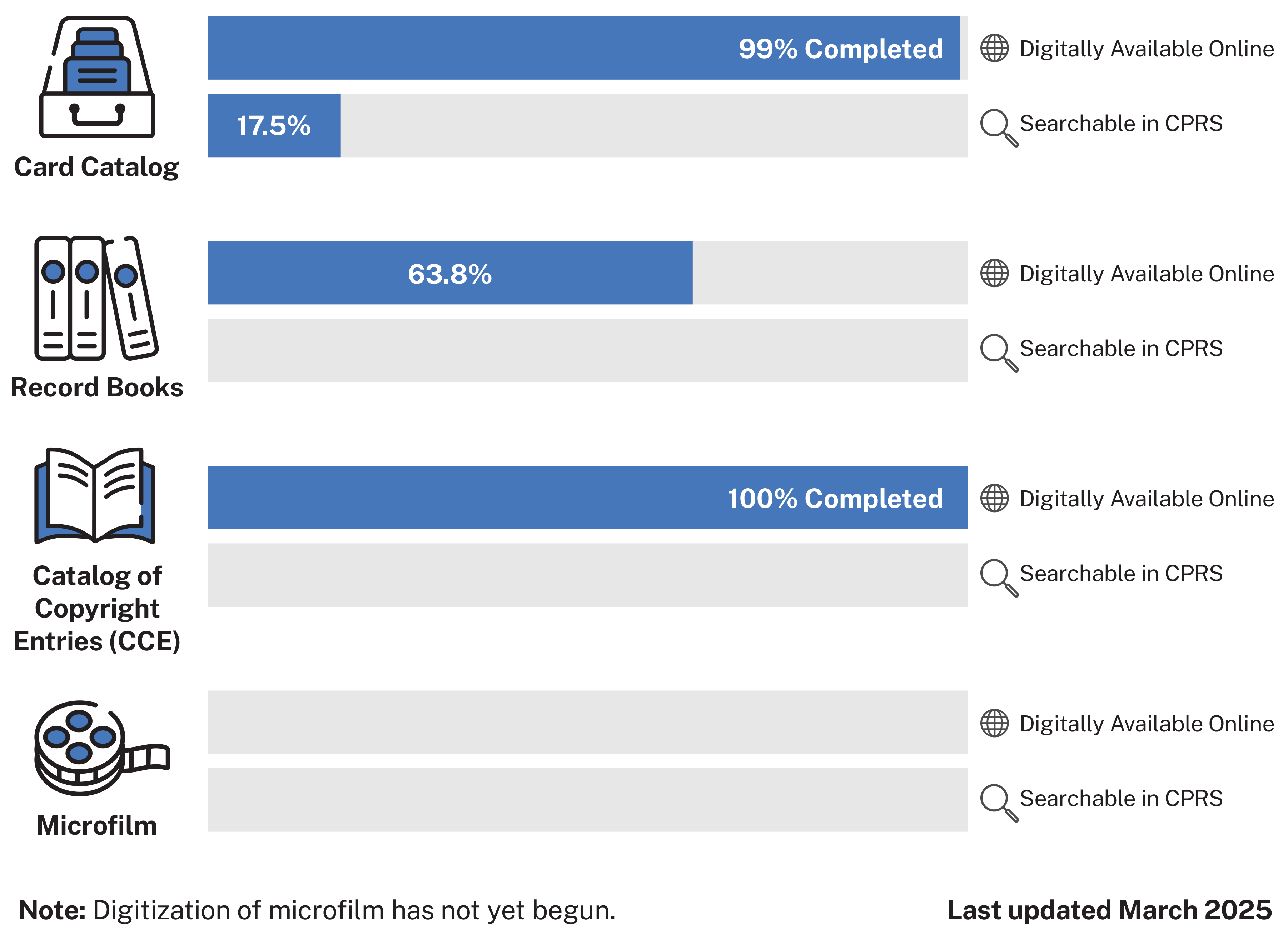
Background
The Copyright Office holds the most complete and accurate collection of copyright records of ownership in the world. The majority of works recorded in the Office may still be under copyright protection. Therefore, the value of accessing accurate, complete legal records of copyright ownership cannot be overstated.
Historical Records Pre-1978 Copyright Records
Originally, copyright owners filed registrations with federal district courts, and they were handwritten in record books. When the copyright function was centralized in the Library of Congress in 1870, Library staff examined, numbered, and recorded requests for copyright registration in record books. This system was maintained until 1889, when a card system went into effect. The oldest copyright records—those before 1870—are held in the Library’s Rare Book Collection in Washington, DC. These records are not part of this effort but are under consideration for future Library efforts to make them available online.
About the Record Types
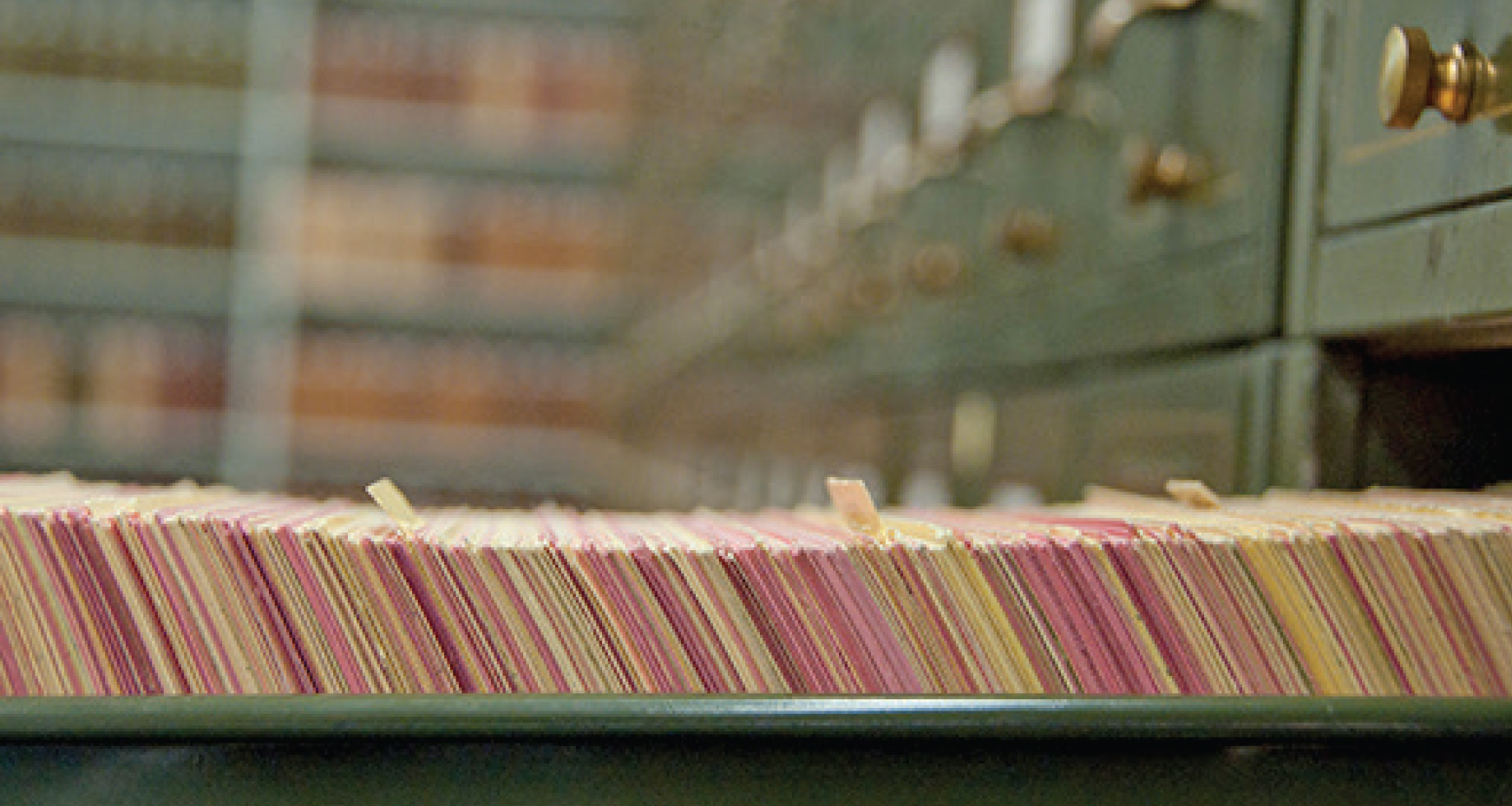
Card Catalog
The physical Copyright Card Catalog is the finding aid, comprising index cards for registrations and assignments. It enables users to find Copyright Office records from 1870 through 1977. It also includes registration applications from 1898 through 1945.
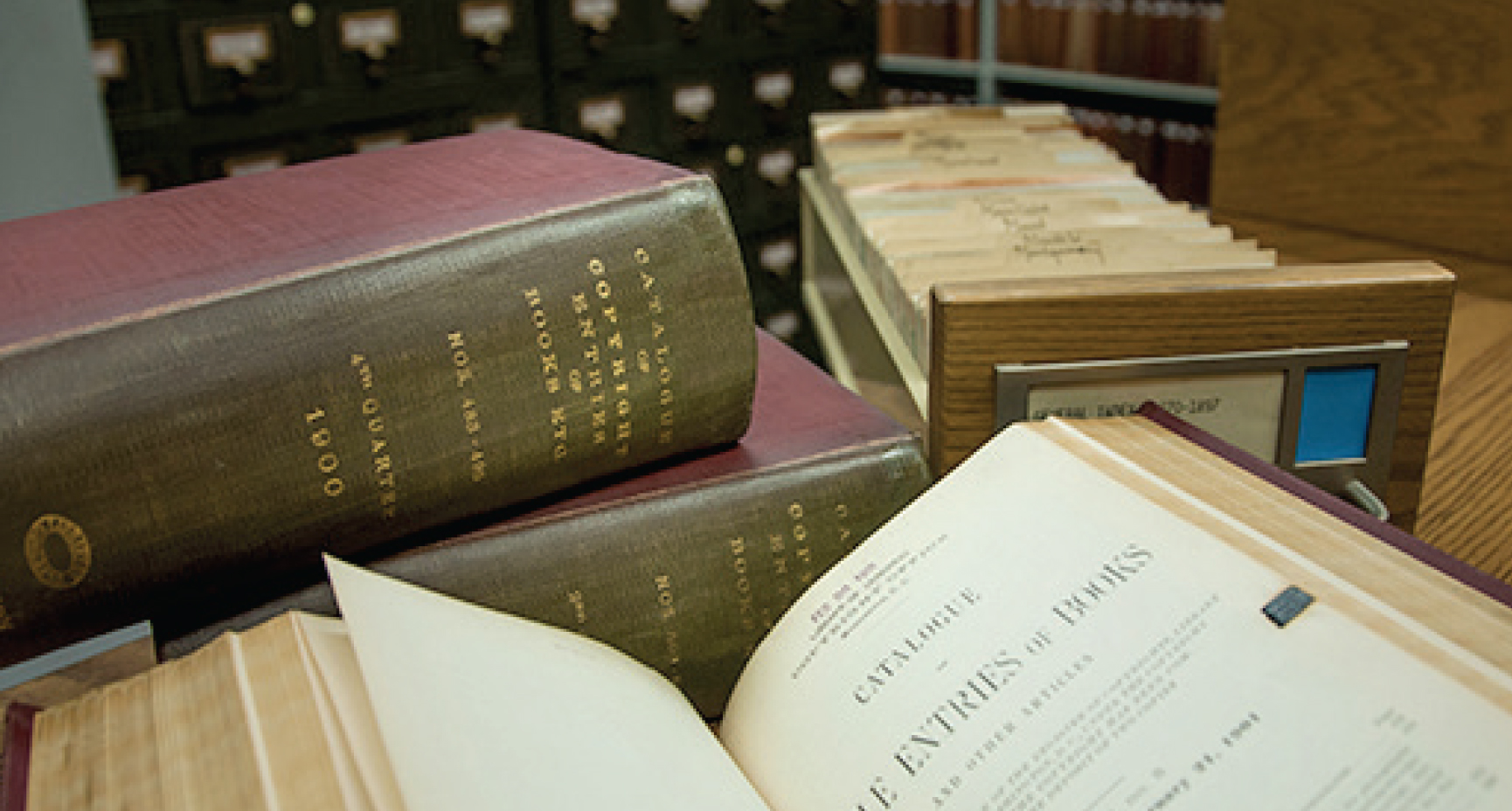
Catalog of Copyright Entries
The Catalog of Copyright Entries (CCE) volumes are compilations of brief registrations and renewals during from 1891 through 1977 ranging from semiweekly to semiannually.
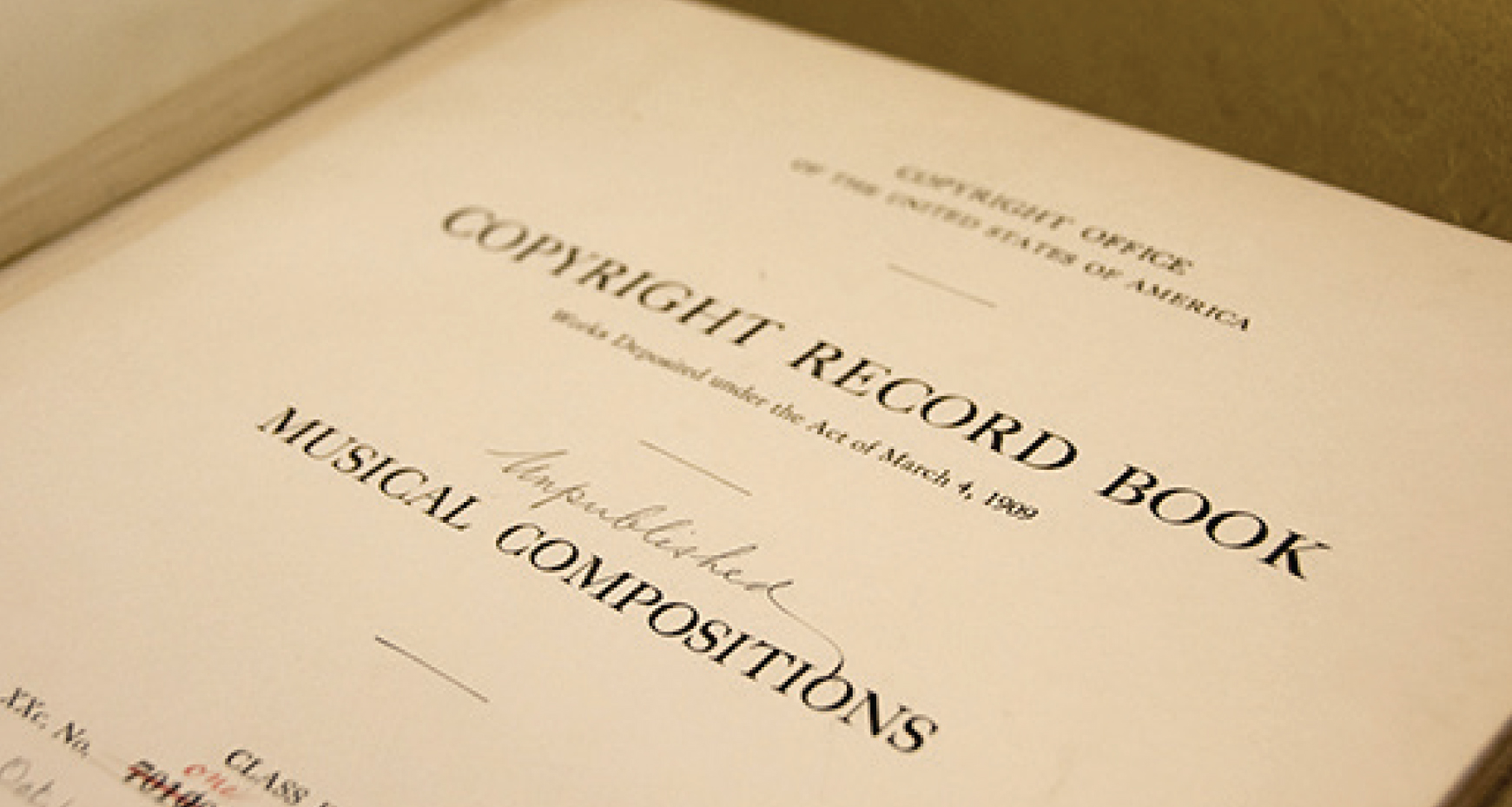
Record Books
The original and full artifacts of registration and recordation are stored in over 26,000 copyright record books, except for the time period of 1898 through 1945, when copyright applications were created on card stock and filed in the Copyright Card Catalog. After 1945, the paper applications were included in record books. In total, an estimated 19 million registrations are bound in record books. Another set of record books contains recordation information showing legal documents transferring and assigning copyright ownership that the Copyright Office recorded from 1870 through 1977.
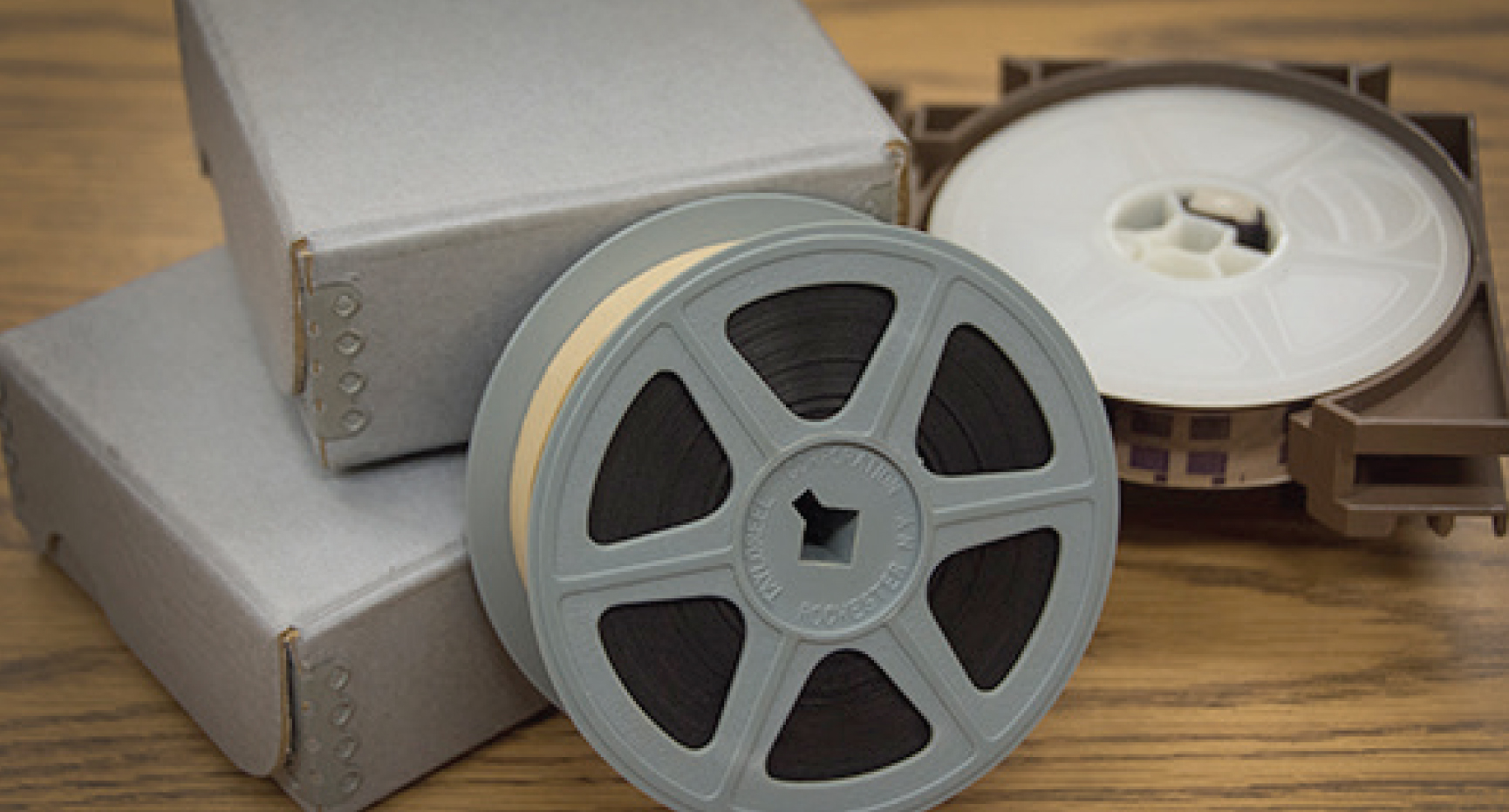
Microfilm
The Copyright Reading Room and the Library’s Jefferson Building house approximately 23,000 microfilm that provide service copies of the historical record books . The collection holds historical record book information, copies of certificates, and other copyright artifacts. The Copyright Office maintains microfilm copies of pre-1870 and 1978 through 1993 records. The microfilm digitization is pending an analysis to determine if any of the microfilm content is unavailable in other online formats in the collection and the availability of funds.